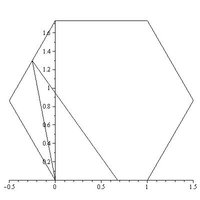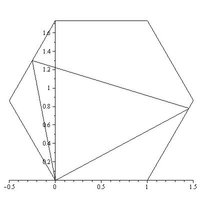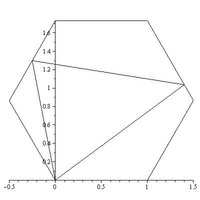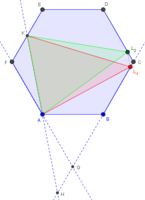There is a regular hexagon ABCDEF. Let the halving point of EF be K. Find point L on side AB, BC or CD, where it is true that the area of the AKL triangle equals 2/5 of the area of the hexagon.
I let the side of the hexagon be 1, and calculated that the AK segment's length is sqrt(7)/2, and the height of the triangle needs to be 12×sqrt(3)/5×sqrt(7).
I also tried out what happens if I let L be B, C, D, or the halving points of these sides.
I think my approach to this problem was wrong, but I couldn't figure out any other way to do it.
Any help or idea is appreciated.
I let the side of the hexagon be 1, and calculated that the AK segment's length is sqrt(7)/2, and the height of the triangle needs to be 12×sqrt(3)/5×sqrt(7).
I also tried out what happens if I let L be B, C, D, or the halving points of these sides.
I think my approach to this problem was wrong, but I couldn't figure out any other way to do it.
Any help or idea is appreciated.




